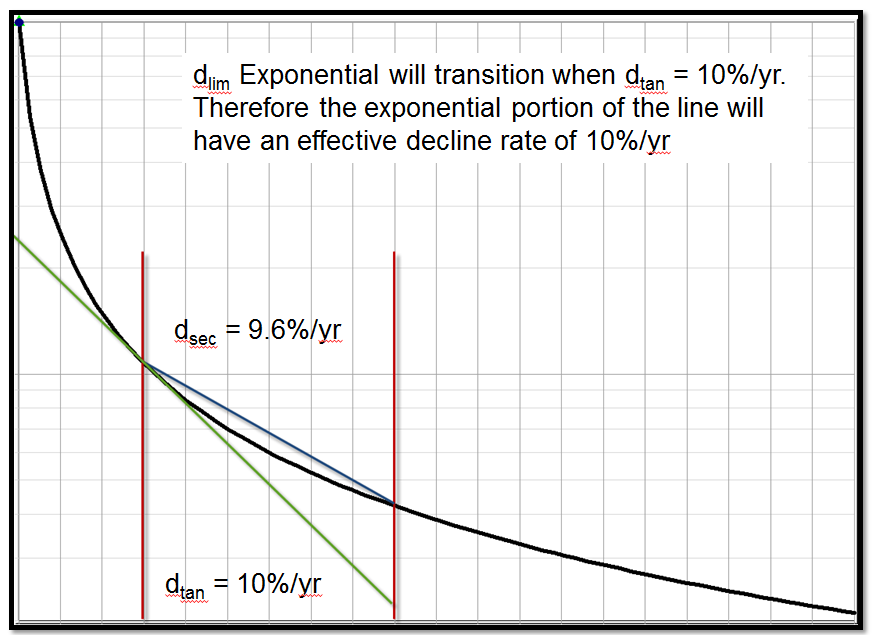The terminal / limiting decline rate begins as a hyperbolic decline curve and transitions into an exponential decline curve at a specified limiting effective decline rate, dlim. When the Terminal / Limiting Decline Rate option is selected in the Calc Method drop-down menu, a dlim value is required.
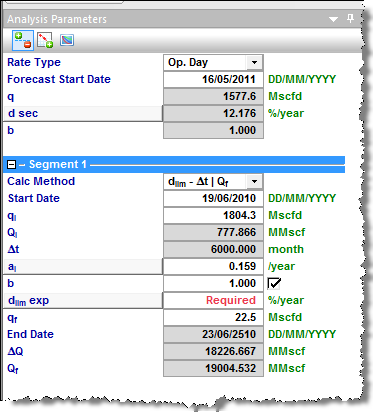
There are two options for the dlim value: “dlimexponential” and “dlimhyperbolic”. When you click  , it toggles to
, it toggles to  ; clicking the option again selects "dlimexponential".
; clicking the option again selects "dlimexponential".
When using the “dlimexponential” option, the decline transitions such that the exponential portion of the decline has an effective decline rate of the dlimvalue specified. When using the “dlimhyperbolic” option, the decline transitions when the hyperbolic portion reaches the specified dlim value. The exponential portion then has an effective decline rate that is different from the dlim value.
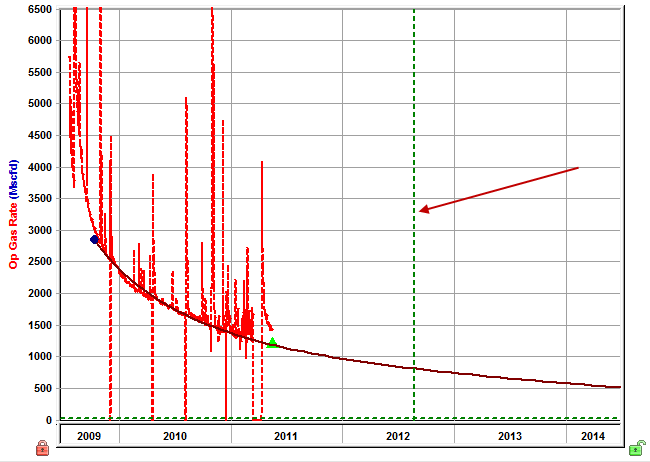
| Note: | The vertical dashed green line in the screenshot above indicates the transition from hyperbolic to exponential. |
Terminal decline calculation methods
There are two ways to calculate the effective decline rate:
1. Secant
2. Tangent
All of the calculations go from your point of interest to a year ahead, but the difference is whether you are drawing a chord segment (secant line) or tangent line.
| Note: | The most common way to calculate the effective decline rate is by using the secant line, and because of this, references to the effective decline rate mean that the secant line is used. |
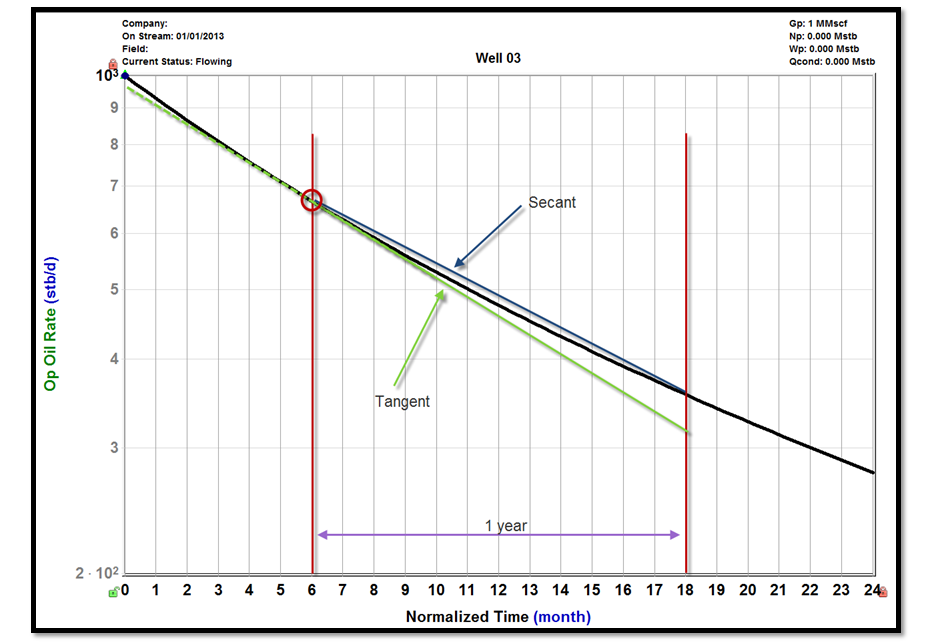
A dlim hyperbolic uses the secant line to calculate the effective decline rate. If you want a dlim hyperbolic of 10%, find where the 10% is calculated, and then switch from a hyperbolic decline to an exponential decline.

However, you cannot go from the hyperbolic to that chord segment line and expect a reasonable result. You need a smooth transition, so even though we used the chord segment to calculate the 10%, we need to use the tangent line to create the exponential section, which is not even 10%. This section is 10.4% for the remainder of the forecast.
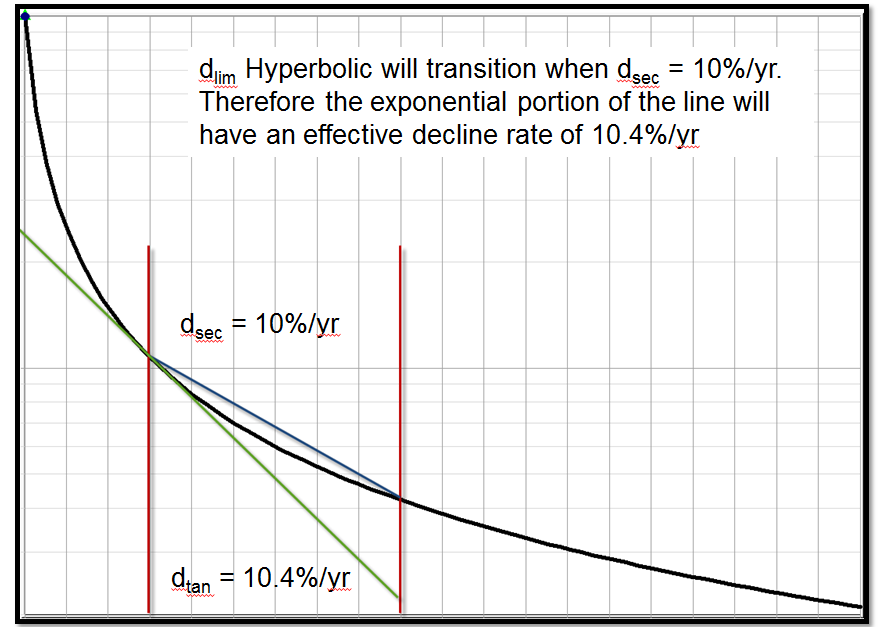
The method described above used to be the default way of calculating terminal decline. Even though the secant / chord segment is how the effective decline rate is almost always calculated, when doing a dlim, we use the tangent line.

The transition from hyperbolic to exponential is smooth, with an exponential portion that is actually 10%. This is now the default way to calculate terminal decline.
